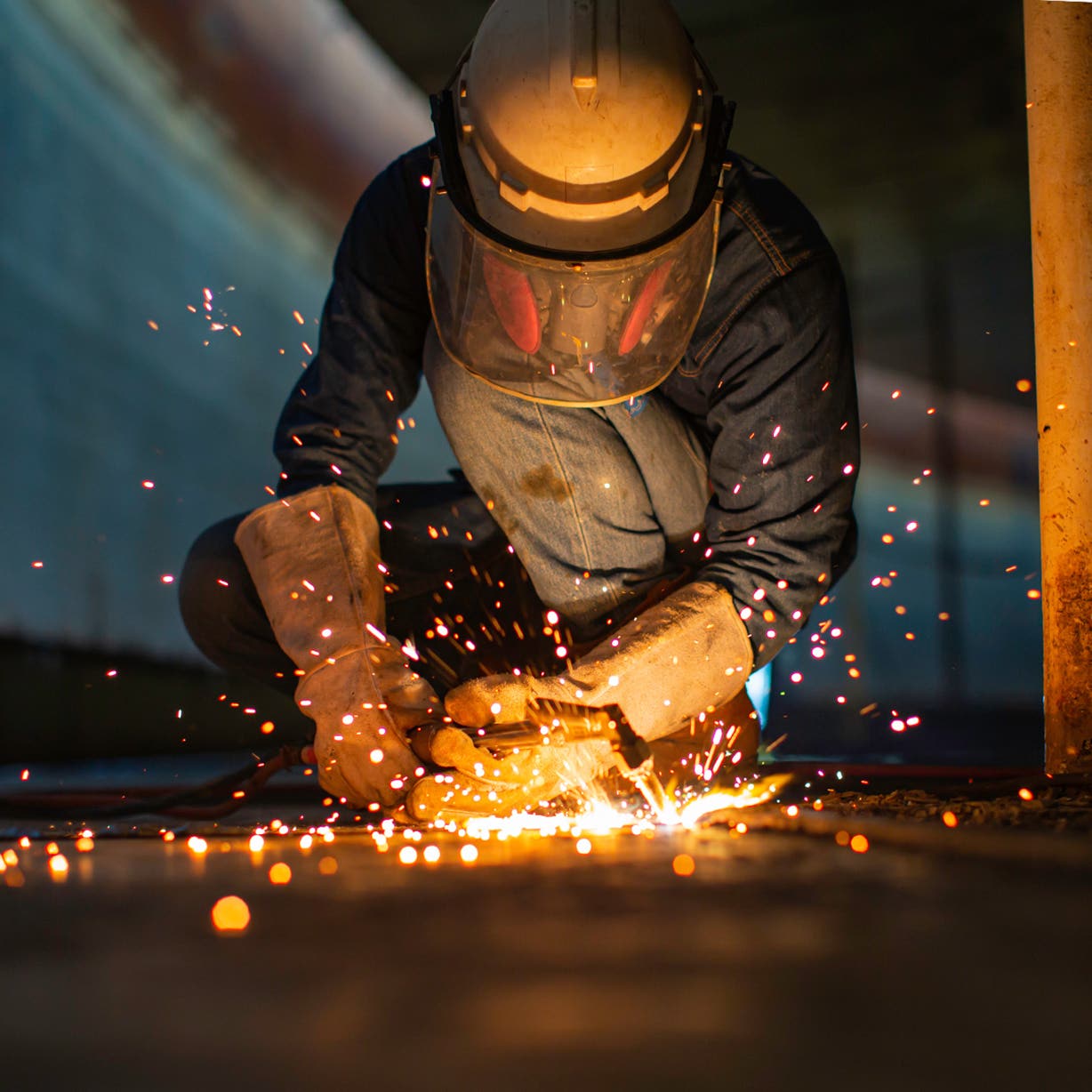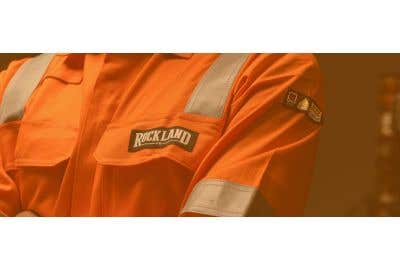I'd be willing to bet that most people reading this are learning about FR clothing, and they are more confused than when they started. Many companies often incorrectly and inconsistently define the term FR, which only fuels the confusion.
Let's start with the absolute basics. What does FR stand for? That seems like a simple question, but depending on who you ask or what you are talking about, it could stand for; flame-resistance, flame-retardant, fire-resistant, fire-rated, etc. Confusing, right?
Retardant, Resistant, and Arc
People often use the terms flame-retardant and flame-resistant interchangeably. They are similar, but they are different terms.
Flame-Retardant
If a garment states that it is flame-retardant, it means the fabric itself does not have any special properties to prevent it from igniting on fire, but the fabric is treated with chemicals designed to quickly self-extinguish in the event the garment is ignited.
Since the garment is treated with a chemical, over time, that chemical can wash off. On the garment's tag, you'll see the maximum number of washes the garment can go through before it's no longer considered flame-retardant.
Flame-retardant garments are a cost-effective choice for PPE that isn't often washed or doesn't have a long life. Flame-retardant garments cost less than flame-resistant garments. Flame-retardant safety vests are popular because workers often tear, lose, or wear out a safety vest before the flame-retardant chemicals wear off. Also, most workers don’t wash their safety vests.
Flame-Resistant
Flame-resistant garments are made of fabrics and materials that inherently self-extinguish flames. Because the flame resistance is the fabric itself and not an added chemical, these garments can be washed as many times as needed.
Many of our flame-resistant garments are also treated with a flame-retardant chemical for added safety. Again, that chemical will wash off over time. Also, Flame-Resistant garments There are a few different standards depending on the garment type. Still, the overarching standard is ANSI/ISEA 107, which specifies the ASTM D 6413 test method, amongst others. I know it sounds complicated, but all you need to do is check the tag and look up the flame-retardant standard.
Arc-Rated
Arc-rated protection refers to protective clothing that has been rated for its ability to withstand electrical arcs (arc flash). An electrical arc is a flow of electricity through the air between two conductors, and it can cause significant harm to people who are near it. Arc-rated clothing is designed to protect workers from the intense heat and radiant energy produced by electrical arcs.
Arc-rated protection differs from flame-resistant protection in that it specifically addresses the hazards of electrical arcs. Flame-resistant clothing is designed to protect against heat and flame exposure from fires. It is not rated to protect against electrical arcs.
Arc-rated clothing is typically rated based on the level of protection it provides. This rating is expressed in terms of the calories per square centimeter (cal/cm2) unit. The higher the cal/cm2 rating, the greater the level of protection the clothing provides.
Characteristics of Flame-Resistant Construction Clothing


One of the biggest misconceptions about flame-resistant and flame-retardant garments is they are “Fire Proof," meaning you cannot get burned if you have them on. The objective of flame-resistant/retardant garments is to self-extinguish as fast as possible.
Let's create an example. We've got two workers; Worker A is wearing regular non-FR clothing, and Worker B is wearing FR clothing. Both workers are exposed to a blast of flames. Any exposed skin on both workers is burned, and initially, both workers' clothing ignites. Worker B’s FR clothing quickly self-extinguish, leaving him with first- and second-degree burns.
Worker A's clothing does not self-extinguish. The flames from the garments continue to burn worker A until an emergency response can put the flame out. Worker A is left with severe 3d degree burns. Ideally, you want to avoid being either worker, but if you are going to get burned, it’s best to limit the amount of burn.
The materials used to manufacture these garments are carefully selected to ensure maximum protection against heat and flame. Some of the most common materials include aramid, modacrylic, and Nomex, which are known for their high-heat tolerance and flame-retardant properties.
Construction clothing must meet strict flame-resistance standards to protect workers on the job. The clothing is typically rated based on its ability to withstand heat and flame exposure, with higher ratings indicating better protection. For example, the National Fire Protection Association (NFPA) provides guidelines for the manufacturing of flame-resistant clothing, including criteria such as the time it takes for the clothing to ignite and the rate at which it burns.
In addition to being flame-resistant, construction clothing must be comfortable and durable. Workers in the construction industry are often required to wear their protective gear for long hours, so it is important that the clothing is flexible and allows for easy movement. Some flame-resistant clothing is made with moisture-wicking materials to keep workers cool and dry, while others feature reinforced seams and heavy-duty zippers to withstand the rigors of construction work.
Benefits of Using Flame-Resistant Clothing
The key benefit of wearing flame-resistant clothing is to help prevent severe burns. If that's the only reason you must protect yourself, you'll do alright. Another benefit to outfitting yourself in flame-resistant/retardant gear is to be compliant with OSHA Regulations: Many industries are regulated by the Occupational Safety and Health Administration (OSHA), which requires employers to provide their workers with appropriate safety equipment. By wearing flame-resistant clothing, workers can help to ensure that their employer complies with these regulations.
The Occupational Safety and Health Administration (OSHA) sets strict standards for workplace safety, and one of the areas it regulates is the use of protective clothing, including flame-resistant clothing. There are several situations in which OSHA requires workers to wear flame-resistant clothing:
- Work with Hazardous Materials: Workers who handle hazardous materials, such as flammable liquids or gases, are required to wear flame-resistant clothing. This includes not only those who work with these materials directly but also those who work close to them.
- Welding and Cutting Operations: Workers who are involved in welding and cutting operations are required to wear flame-resistant clothing. This includes those who operate the equipment, as well as those who are working in the immediate vicinity.
- Electrical Work: Workers involved in electrical work, such as electrical maintenance or electrical installation, are required to wear flame-resistant clothing if there is a risk of electrical arc exposure. This includes not only those who are performing the work but also those who are working in close proximity to it.
- Fire Fighting and Emergency Response: Workers who are involved in firefighting and emergency response are required to wear flame-resistant clothing. This includes firefighters, as well as those who work in hazardous materials response, disaster relief, and other similar fields.
By requiring workers to wear flame-resistant clothing in these situations, OSHA is helping to protect them from being unnecessarily burned if an accident occurs while on the job. With the right flame-resistant clothing, workers can feel confident and secure while working, knowing they have the protection they need to do their jobs safely.
PowerPak Protection
We take fire and burn hazards very seriously. We have a curated selection of flame-retardant, flame-resistant, and arc-rated gear. And that’s only the tip of the iceberg. Apart from regular work attire, we offer flame-retardant tarps and flame-retardant pop-up tents. PowerPak offers a selection of flame-resistant safety vests. Still, it's our Arc-Rated gear that we are most proud of. We have everything you need, from gloves, goggles, coveralls, and jackets to full arc-flash kits.







